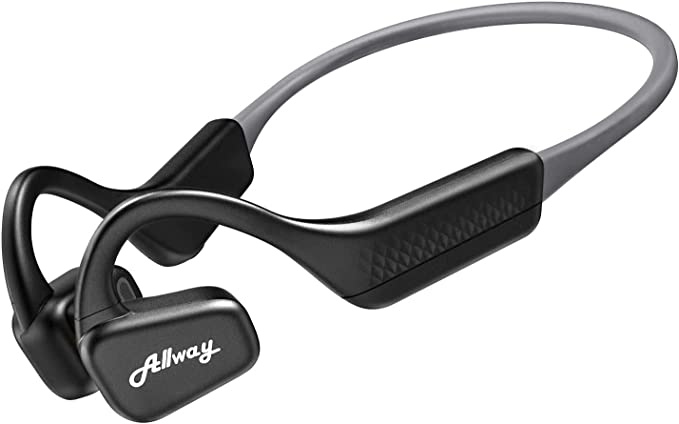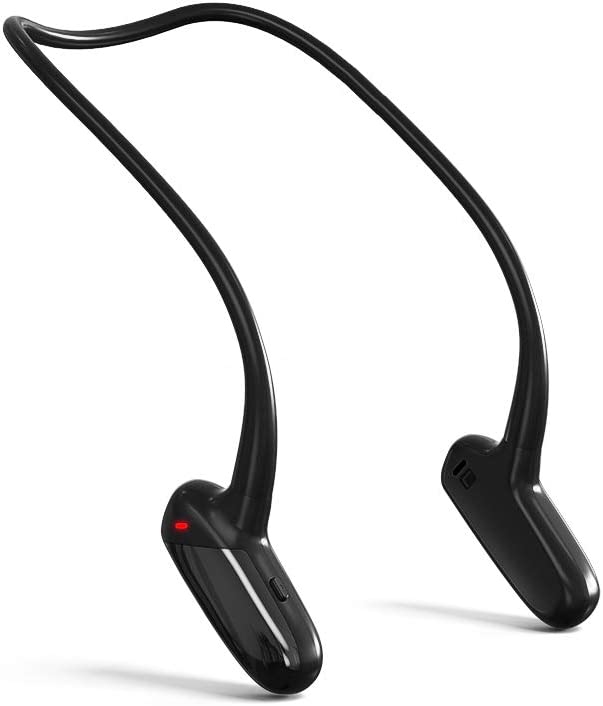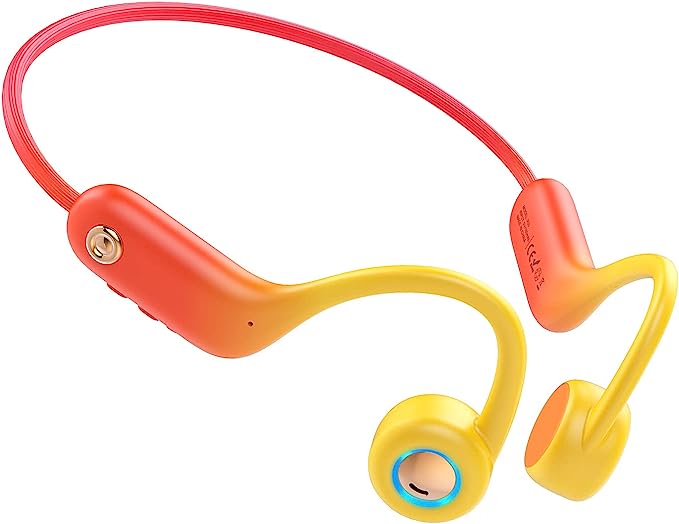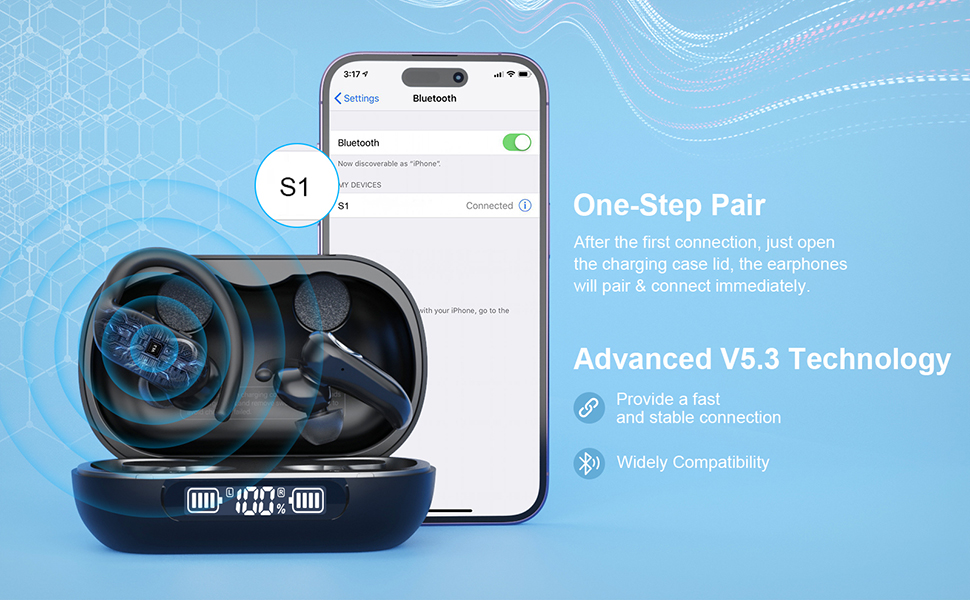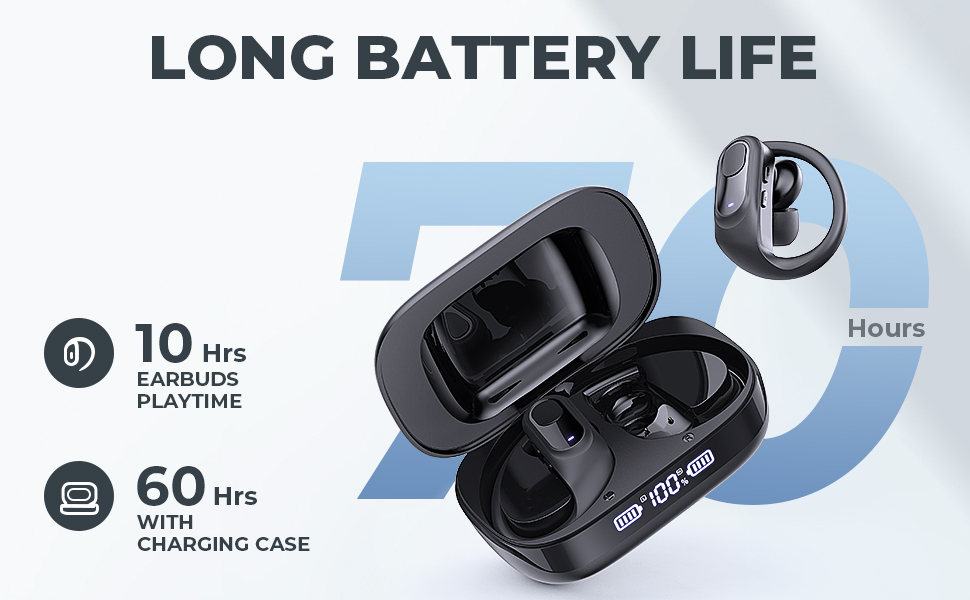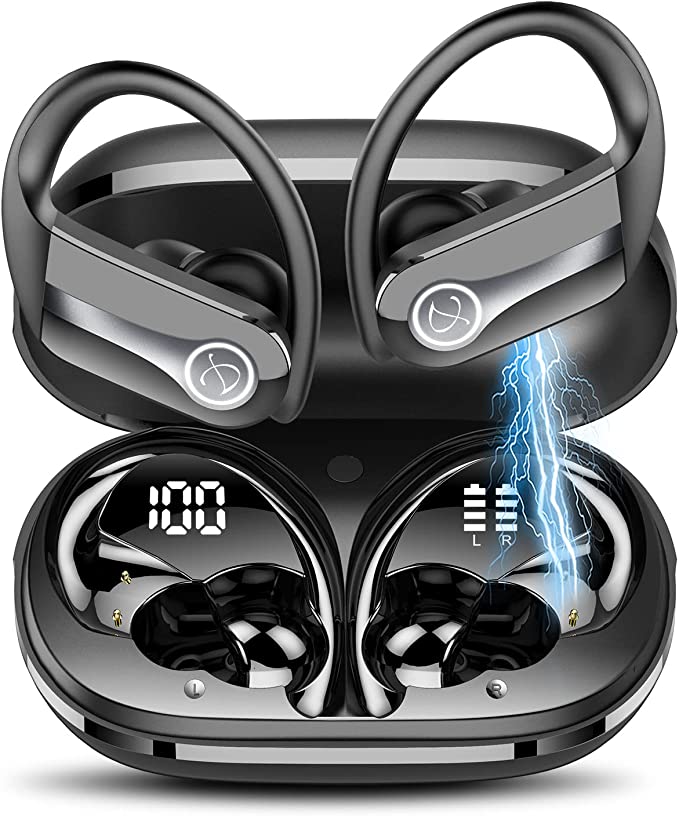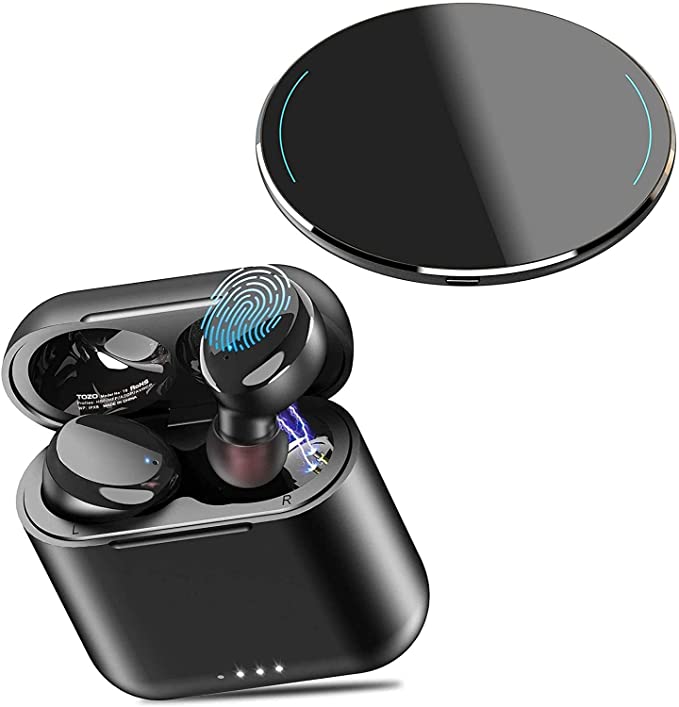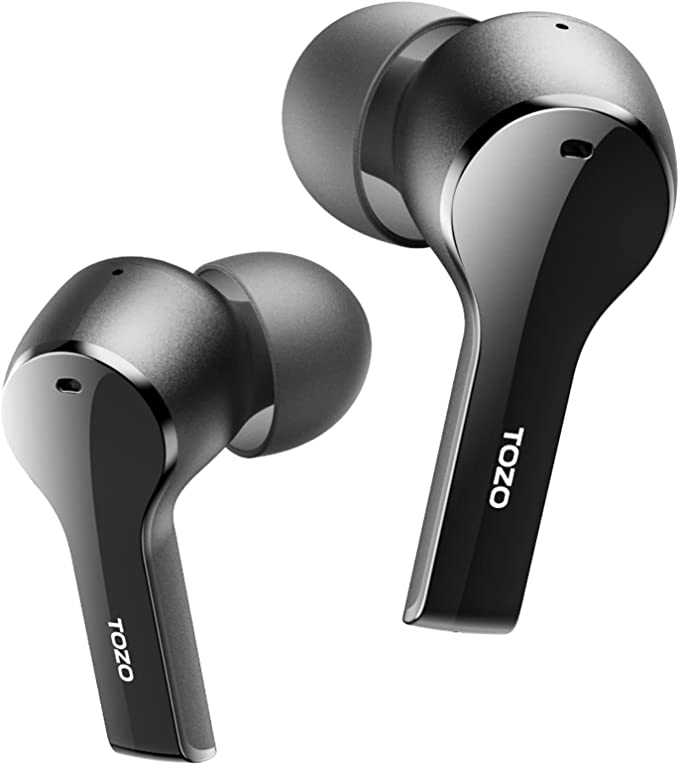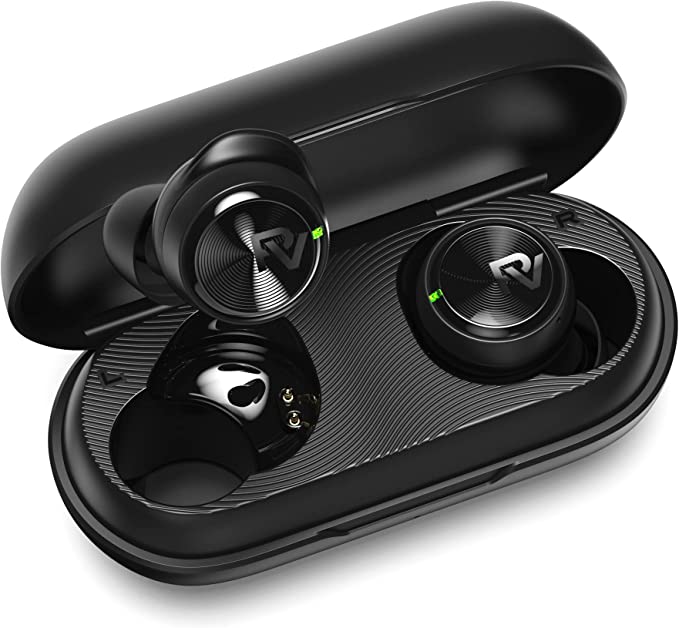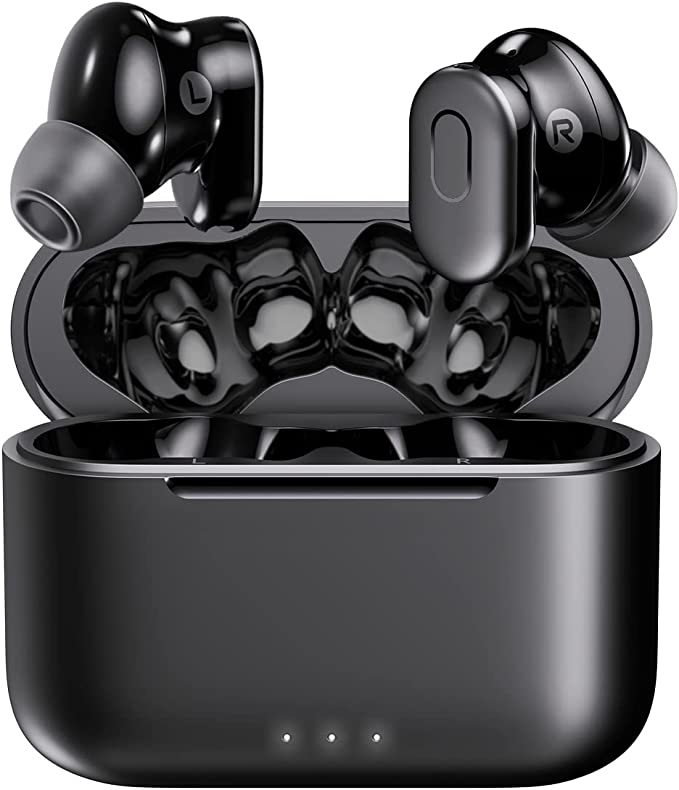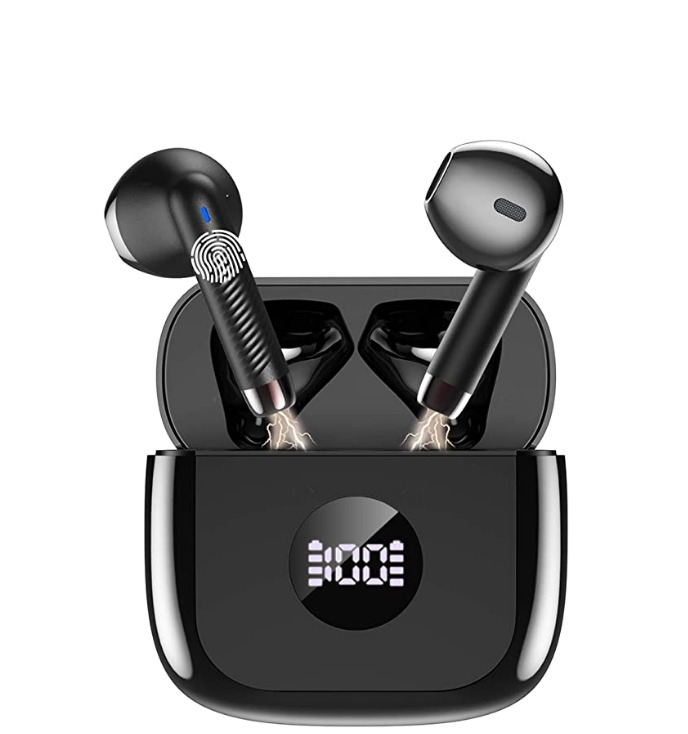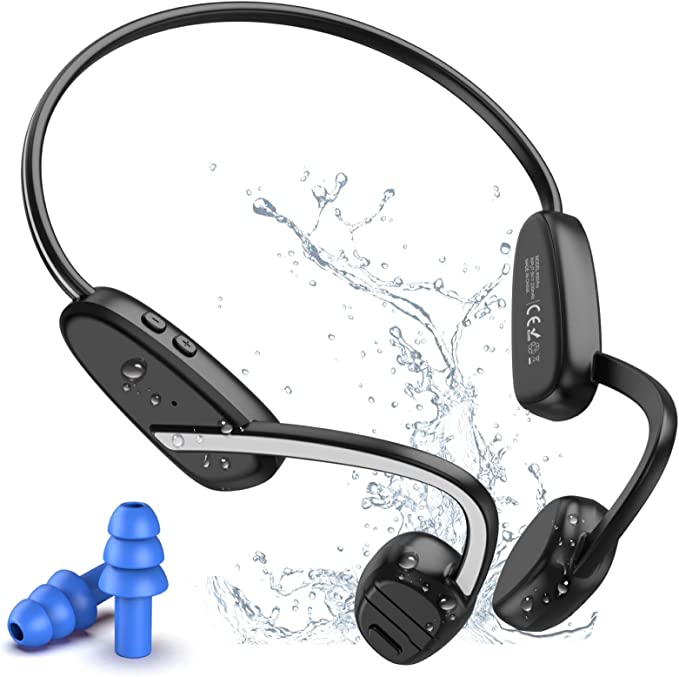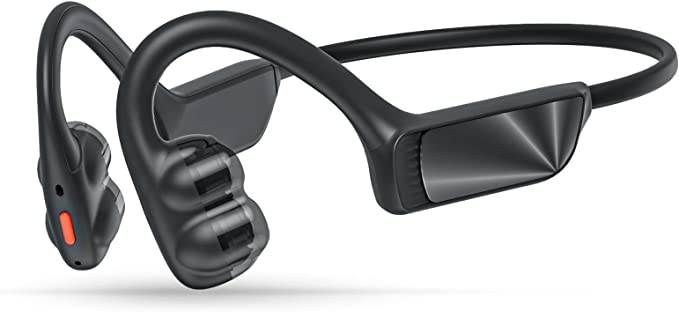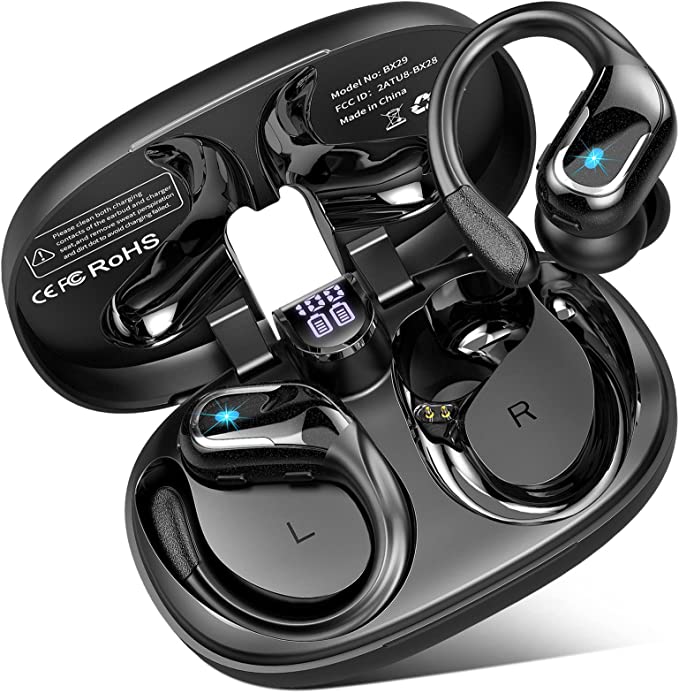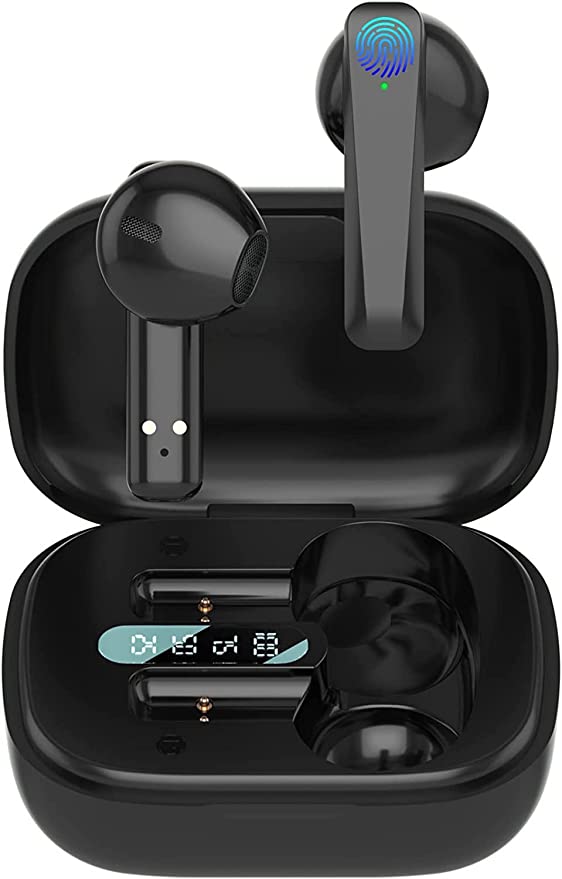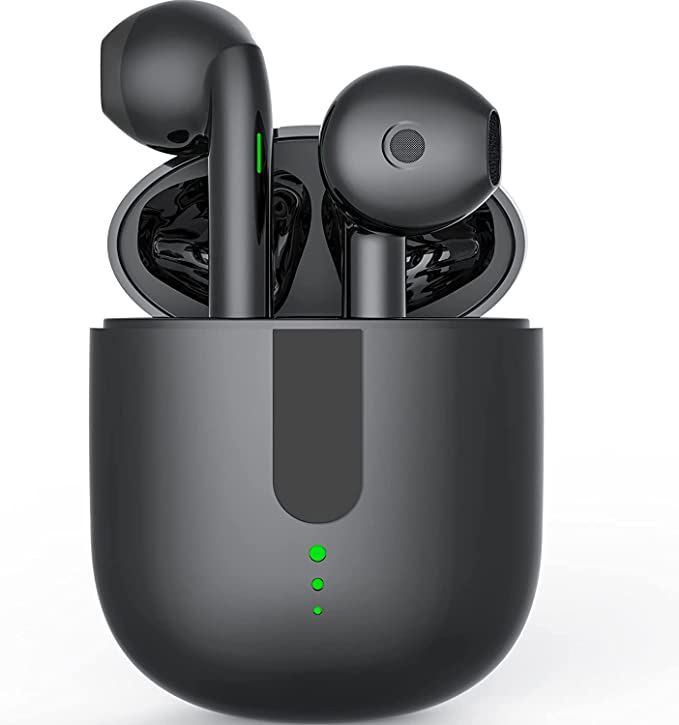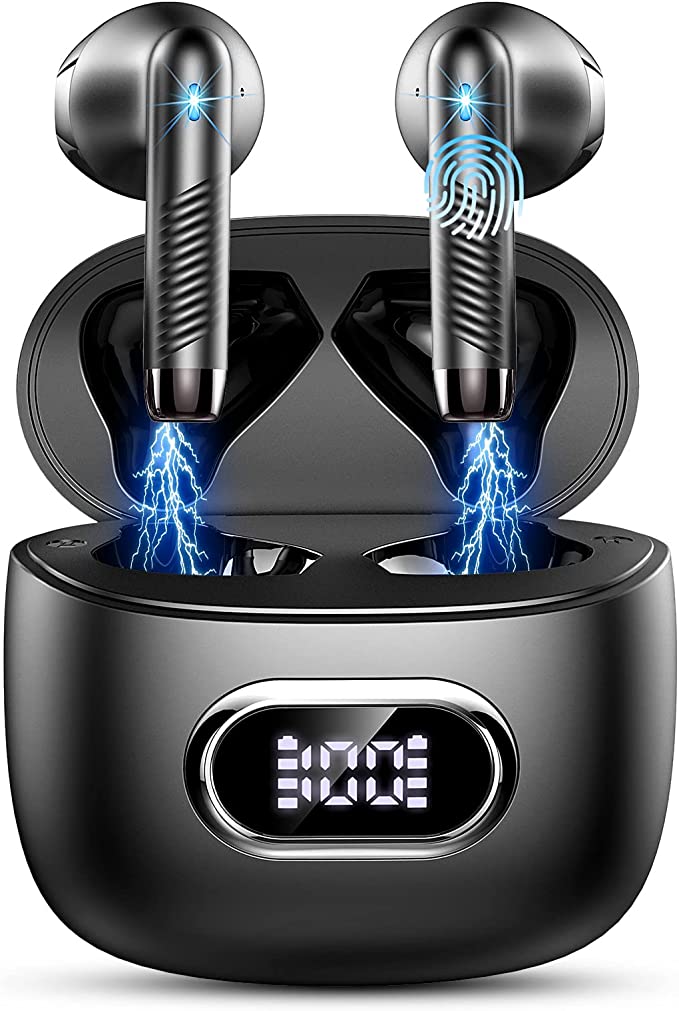iKF-Zeus Air Open Ear Wireless Earphones: The Science of Situational Awareness and Immersive Sound
Update on May 15, 2025, 9:10 a.m.
In our hyper-connected, audio-saturated world, a peculiar paradox has emerged. We crave the rich, immersive soundscapes offered by personal audio – music that moves us, podcasts that enlighten, calls that connect. Yet, the very act of plugging in often means tuning out, creating a bubble that can leave us disconnected from the subtle, and sometimes critical, symphony of our immediate surroundings. Imagine the runner, lost in their power anthem but oblivious to an approaching cyclist; the remote worker, deep in a conference call, yet missing the doorbell; or the parent, trying to enjoy an audiobook while needing to keep an ear out for their child. This is the modern audio dilemma: the tug-of-war between personal immersion and environmental integration. It’s into this arena that open-ear audio technology steps, not as a compromise, but as a thoughtful evolution.
The journey of personal audio has been one of shrinking form factors and increasing isolation, from the shared experience of a room-filling stereo to the intensely personal world of in-ear monitors. Each step brought us closer to our chosen sound, but perhaps a step further from the world around us. Open-ear headphones, like the iKF-Zeus Air, represent a conscious shift in this trajectory. They champion a listening experience where your personal soundtrack and the ambient environment can coexist, not in conflict, but in a carefully orchestrated harmony.
At its heart, the open-ear philosophy is about respecting the natural way we hear. Our auditory system is a marvel of biological engineering, designed to process a complex tapestry of sounds, localizing their origins, and helping us navigate our environment safely and effectively. Traditional headphones, by sealing the ear canal, can alter this natural process, sometimes leading to discomfort from pressure build-up or a diminished sense of spatial awareness. Open-ear designs, by contrast, leave the ear canal unobstructed. The iKF-Zeus Air, for instance, employs what it terms “Directional Audio Technology” to deliver sound to the listener without an occlusive seal, aiming to provide a private audio experience while preserving that crucial connection to the surrounding world. This approach, primarily a form of air conduction where sound waves are guided towards the ear, is distinct from bone conduction (which the product information mentions in passing but does not emphasize as its core operational principle). The goal is clear: to let you hear both your audio and the world, seamlessly.

Deconstructing the Sound: Inside the iKF-Zeus Air’s Audio Arsenal
To achieve this delicate balance of personal audio and environmental openness, the iKF-Zeus Air integrates several key technologies. It’s not merely about leaving the ear uncovered; it’s about intelligently managing sound, connectivity, and interaction to create a cohesive and user-centric experience. Let’s delve into the science and significance behind its core features.

The Directed Soundscape: How “Directional Audio” Aims for Your Ears
The primary challenge for any open-ear audio device is to deliver clear, rich sound to the listener while minimizing how much of that sound escapes into the surrounding environment – a phenomenon known as sound leakage. This is crucial for privacy, especially in quieter public spaces. The iKF-Zeus Air tackles this with its “Directional Audio Technology.” While the product description speaks of “360° open directional audio” and “audio lossless transmission to the ear,” the underlying engineering likely involves carefully positioned speaker elements or acoustic shaping within the earphone housing. The aim is to create a focused beam of sound directed towards the ear canal. This minimizes the energy radiating outwards, thus “effectively suppressing sound leakage.”
Complementing this directional approach is a 16mm “ultra large dynamic unit.” In audio engineering, the size of a dynamic driver’s diaphragm is a significant factor in its ability to reproduce sound, particularly at lower frequencies. A larger diaphragm can move more air, which is essential for generating robust bass notes and creating a sense of fullness in the sound. In an open-ear design, where there’s no sealed chamber to build up bass pressure, a larger driver can help compensate, striving for that “fuller bass and stunning panoramic stereo effects” the product page mentions. For the user, this means the potential for a more engaging musical experience, or clearer vocal reproduction in podcasts, without the isolating sensation of in-ear buds. Imagine listening to your favorite tracks on your commute, feeling the rhythm, yet still being able to hear platform announcements or the gentle hum of the city.

The Unseen Handshake: The Quiet Prowess of Bluetooth 5.3
The magic of wireless audio hinges on the invisible link between your device and your earphones: Bluetooth. The iKF-Zeus Air incorporates “New V5.3” Bluetooth, the latest iteration in a long line of advancements. But what does a newer Bluetooth version truly offer? It’s not just a number; it represents tangible improvements in how data is handled, leading to a more robust and efficient connection. Bluetooth 5.3, for example, offers features that enhance connection stability, reduce interference, and optimize power consumption. This translates to fewer frustrating dropouts, potentially clearer audio streams (as more data can be transmitted reliably, supporting better audio codecs if implemented by both source and headphone), and a longer listening time before needing a recharge. The stated range of up to 10 meters (around 33 feet) provides freedom of movement, whether you’re pacing during a call or leaving your phone on a bench at the gym.
While the product page claims Bluetooth 5.3 offers “better sound quality,” it’s important to note that Bluetooth itself is a transmission protocol; the ultimate audio fidelity also depends on the audio codecs supported by both the transmitting device and the headphones (like SBC, AAC, or aptX variants, which are not specified in the provided data for the iKF-Zeus Air). However, a stable and efficient connection, as facilitated by Bluetooth 5.3, is the foundational requirement for any good wireless audio experience. For users, this means a more seamless and reliable connection, whether they are transitioning between apps on their phone or simply moving around their environment. While one user review mentioned a lag issue when paired with a laptop, this can often be attributed to variables in the laptop’s Bluetooth drivers or operating system stack, rather than an inherent flaw in the Bluetooth version of the headphones themselves, as Bluetooth interoperability can sometimes be complex across myriad devices.

Cutting Through the Clutter: The Clarity of ENC in Calls
In today’s world of remote work and constant communication, the ability to make and receive clear phone calls is non-negotiable. The iKF-Zeus Air is equipped with Environmental Noise Cancellation (ENC) technology, specifically for its microphones. It’s crucial to distinguish ENC from Active Noise Cancellation (ANC) that a listener might experience. ANC aims to reduce external noise for the person wearing the headphones, creating an immersive listening bubble. ENC, on the other hand, focuses on the outgoing audio: your voice. The product states it has “two high-quality microphones + ENC call noise reduction technology.” This typically means that the microphones work in tandem. One primarily captures your voice, while the other(s) pick up ambient sounds from your surroundings. A sophisticated digital signal processing (DSP) algorithm then intelligently analyzes these inputs, identifies the characteristics of human speech versus noise, and subtracts or suppresses the unwanted background sounds.
The result? Your voice should come through more clearly to the person on the other end of the call, even if you’re in a moderately noisy environment like a bustling street, a busy office, or a windy park. This “intelligent noise reduction algorithm” aims for “accurate acquisition of vocals,” significantly enhancing call intelligibility. For the user, this means less likelihood of having to repeat oneself and a more professional-sounding call experience, fostering better communication regardless of location.
Performance in Motion: Features Tailored for an Active, Connected Life
Beyond the core audio and connectivity, the iKF-Zeus Air is kitted out with features that speak directly to users who are often on the move, whether for fitness, commute, or simply navigating a dynamic day.
In Lockstep with Action: The 38ms Low Latency Advantage
For many, headphones are not just for passive music listening; they are integral to interactive experiences like gaming or watching videos. In these scenarios, audio-visual synchronization is paramount. A noticeable delay between what you see on screen and what you hear can be jarring and detrimental to the experience. The iKF-Zeus Air addresses this with a dedicated “Gaming Low Latency” mode, claiming a delay “as low as 38ms” (milliseconds). To put this in perspective, human perception of audio-visual asynchrony varies, but delays below 40-60ms are often considered difficult to detect by most people, especially in fast-paced action. Achieving a latency of 38ms means that the sound of an in-game explosion, a character’s dialogue in a movie, or the beat in a music rhythm game should align very closely with the on-screen visuals. This heightened synchronicity can significantly enhance immersion and, in gaming, even provide a competitive edge by allowing for quicker reactions to auditory cues. The product page suggests this delay “belongs to the delay range that the human ear cannot perceive,” which, while a generalization, highlights the goal of a seamless, lag-free experience.

Weathering the Elements: The Practicality of IPX5
Life, especially an active one, involves encounters with moisture – be it perspiration during an intense workout or an unexpected light rain shower during a run. The iKF-Zeus Air comes with an IPX5 waterproof rating. The “IP” stands for Ingress Protection, and the numbers that follow signify the level of protection against solids (the first digit, X in this case, means no specific rating for dust ingress was tested or provided) and liquids (the second digit). An IPX5 rating means the earphones are protected against low-pressure water jets from any direction. In practical terms, this makes them “fully sweatproof” and capable of resisting “moisture, water drops, and dust throughout your indoor or outdoor activities,” as the product description notes. This resilience is vital for anyone who intends to use their earphones during exercise or in less-than-ideal weather. It provides peace of mind that a bit of sweat or a sudden drizzle won’t spell disaster for their audio companion. However, it’s important to note the limitation explicitly stated: “Not suitable for swimming.” Submersion is beyond the IPX5 capability.
Designed for the Long Haul: Comfort, Fit, and Endurance
For any wearable technology, particularly headphones that might be worn for hours on end, comfort and a secure fit are just as important as technical performance. The iKF-Zeus Air utilizes “premium soft silicone material” and an “ergonomic surround and streamlined sinking design.” This “hanging eardesign,” which hooks over the ear, is intended to distribute weight and provide stability without exerting inward pressure into the ear canal, a common source of discomfort with some in-ear models. The goal is a “painless and harmless” experience, allowing for prolonged use whether running, dancing, or even when wearing glasses. The nature of such a design means it rests outside the ear canal, which some users, like the reviewer Dawn who mentioned having “small ears,” might find “a bit large” or loose compared to a snug in-ear fit. This highlights a common consideration with open-ear designs: achieving a universally perfect fit can be challenging, though the flexible silicone likely aids in accommodating a range of ear shapes.
Powering these experiences is a 90mAh battery within the earbuds (it’s typical for this to be the capacity per earbud, or the combined capacity if they function as an inseparable pair for battery purposes), which the product information links to “Up To 7 Hours Play.” The charging case, a portable power bank for the earbuds, holds a substantial 500mAh capacity. This combination offers what the company describes as “Up To 50 Hours Of Use” or, elsewhere, “playback time can reach up to 48 hours” when used with the charging compartment, which can reportedly charge the earbuds about “3 time(s)”. This extensive battery life is a significant boon for users who are often away from power sources, be it during long commutes, travel, or simply a desire not to charge their devices constantly. The convenience of a Type-C charging interface for the case is also a welcome modern standard. For optimal case battery health, the manufacturer advises against using fast chargers, recommending a charging head below 5V=2.1A.
Beyond the Core: The Holistic Experience
The iKF-Zeus Air experience is further shaped by its user interactions and the philosophy of its creators. “Intelligent touch control” with an “Anti touch design” suggests an interface that is both responsive and resistant to accidental commands – a common frustration with overly sensitive touch surfaces. The existence of an “iKF SELF-DEVELOPED APP” for the Zeus model hints at further avenues for customization, which could potentially include EQ adjustments, control remapping, or firmware updates, although the specific app functionalities are not detailed in the provided information.
The brand behind the earphones, iKF (a marque of Oumu Technology, established in 2016), defines its initials as standing for “[interesting] + [knightly] + [free].” While abstract, such philosophies can inform design choices. “Free,” for instance, resonates strongly with the open-ear concept – freedom from occlusive ear pressure, freedom from being cut off from one’s surroundings, and the general freedom of wireless audio.
It’s also important to consider the inherent characteristics of open-ear designs. While they excel in providing situational awareness and comfort, they can present different acoustic experiences compared to sealed headphones. For example, deep bass perception often relies on a sealed acoustic chamber created in the ear canal. Open designs, by their nature, lack this seal. While the 16mm driver in the iKF-Zeus Air aims to deliver “fuller bass,” the perceived bass impact might be different, especially in noisy environments where low-frequency ambient sounds can mask the headphone’s output. This is reflected in one user review noting the need to turn the volume up to “almost the loudest setting in order to hear clearly,” especially when considering potential use in environments with “a lot of traffic noise.” This is a common trade-off: the openness that allows environmental sound in also means the desired audio has more external sound to compete with.

Closing Thoughts: Reclaiming Your Auditory Horizon
The iKF-Zeus Air Open Ear Wireless Earphones emerge as a considered offering within the growing category of audio devices designed for integrated listening. They are not intended to be instruments of absolute sonic isolation, nor do they claim to be. Instead, they represent a technological endeavor to weave personal audio more seamlessly into the fabric of daily life. Through features like Directional Audio Technology, the robust connectivity of Bluetooth 5.3, the call-enhancing clarity of ENC, and a design focused on active use and extended comfort, the iKF-Zeus Air aims to empower users to stay connected, entertained, and informed without disengaging from the vital cues of their surroundings.
The broader trend in personal audio seems to be moving beyond a singular focus on fidelity towards a more holistic consideration of user context, comfort, and interaction with the environment. Devices like these acknowledge that sometimes the most important sound is not the one coming from our headphones, but the one that alerts us, connects us, or simply reminds us that we are part of a larger, vibrant world. The iKF-Zeus Air, with its blend of awareness-centric design and modern wireless features, invites us to reconsider how we listen, offering a way to enjoy our personal soundscapes while keeping our ears, and minds, open to the world.
